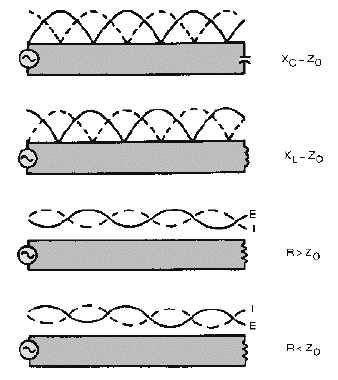3-56
A transmission line can be terminated in its characteristic impedance as an open- or short-circuit, or
in capacitance or inductance.
Whenever the termination on a transmission line is NOT EQUAL TO Z
0, there are reflections on the
line. The amount of voltage reflected may be found by using the equation:
When the termination on a transmission line EQUALS Z0, there is NO reflected voltage.
The measurement of standing waves on a transmission line yields information about operating
conditions. If there are NO standing waves, the termination for that line is correct and maximum power
transfer takes place.
The STANDING WAVE RATIO is the measurement of maximum voltage (current) to minimum
voltage (current) on a transmission line and measures the perfection of the termination of the line. A ratio
of 1:1 describes a line terminated in its characteristic impedance.



